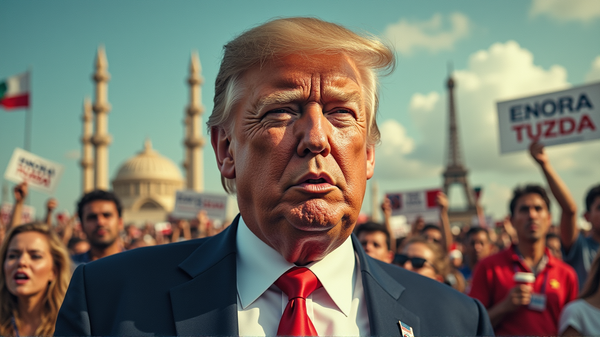India-China Rapprochement: How Trump’s Tariffs Are Redefining Asian Alliances
Trump’s tariffs drive a surprising India-China alliance, challenging US influence and reshaping trade dynamics in Asia.

In the constantly shifting tides of global geopolitics, a new alliance is taking shape that might surprise many. Just a few years ago, India and China seemed on the brink of open conflict, with simmering tensions along their Himalayan border. But today, as geopolitical winds and economic policies, particularly those emanating from the US, shift, the two regional giants appear to be inching toward collaboration.
A Historical Pivot
Let’s rewind to 2020: President Trump’s pomp-filled visit to India was celebrated nationwide, while relations with China plunged following deadly border skirmishes. Fast forward, and rapid geopolitical shifts, combined with a 50% tariff on Indian imports imposed by Trump, have seemingly nudged New Delhi and Beijing closer together. According to Western Post, political analysts observe that these tariffs are undermining decades of US strategic influence in Asia.
India-China’s Newfound Bonhomie
The recent meeting between India’s Prime Minister Narendra Modi and China’s Foreign Minister Wang Yi underlines “steady progress” in their relationship. Their discussions addressed historic tensions, such as the long-contested border and agreed on confidence-building measures like resuming direct flights and easing visa processes. These confidence-building measures mark a critical thaw in Indo-China relations, promoting trade and cultural exchange through easier border facilitation.
Strategic and Economic Reconfigurations
Trump’s tariffs, analysts note, are causing a realignment. “The pace of improvement [in India-China relations] has hastened,” asserts trade economist Biswajit Dhar. China has indicated willingness to provide greater market access for Indian goods, possibly easing the blow from US-imposed economic barriers. It’s a significant gesture hinting at the benefits of strengthened economic partnerships.
What This Means for the US-led Quad
The growing India-China rapprochement presents challenges to the US-led Quad (consisting of the US, Australia, Japan, and India). India has traditionally been seen as a counterweight to China within this grouping. But now, the warming ties might shift focus away from an overtly anti-China stance, suggesting a broader agenda promoting Asia-Pacific public goods rather than exclusively countering China.
A Balance in Geopolitical Strategy
For both India and China, easing of tensions holds potential strategic advantages. As scholar Ivan Lidarev notes, both nations may face fewer adversaries, potentially promoting stability in a volatile world. In a broader sense, this shift underscores the intricate balance of geopolitics in which nations continually reassess alliances and policies in response to changing international dynamics.
Navigating Future Collaborations
Despite this warming trend, it’s crucial to note, as experts do, the impossibility of a dramatic transformation in India-China ties due to inherent competitive interests. For India, with its policy of strategic autonomy, any pivot involves careful consideration of long-term implications.
In summary, Trump’s tariffs and the subsequent geopolitical recalibration have paved the way for an unexpected India-China alliance. This evolving partnership not only reconfigures Asia’s geopolitical landscape but also signals a strategic shift that could fundamentally reshape global trade and diplomatic alignments.





